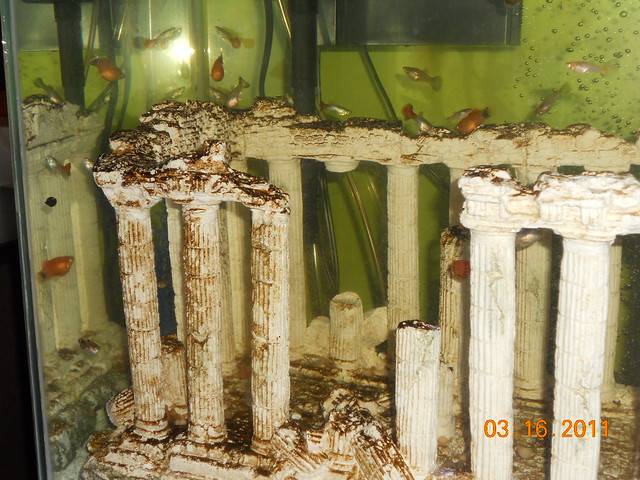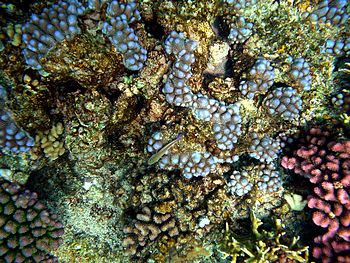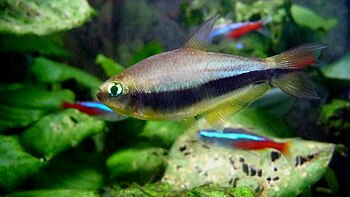Aquarium ornaments aren't there to add any benefits to the fish, they are just for you to add some decoration in the tank. You can have all sorts of ornaments, big or small, traditional or caricature, simple or even complicated. There are thousands of different ornaments that you can buy in stores or you can even make your own. However ornaments are not for all fish, some fish don't like them, I know for a fact Oscars don't take well to any type of ornament or even plant. Some fish do need them though, basically to hide or live in and keep away from bigger fish.
 |
| Photo by osseous |
Traditional ornaments are ornaments like castles and ships, they provide security for smaller fish from the bigger ones, they also provide a place to stay and play, yes fish do play! Fish ornaments are available in pet and fish stores. They tend to range from very low to very high prices. You can of course get more detailed ornaments that aren't shaped to be anything except for like branches with weeds on them. Some fish need their ornaments to resemble their natural home, for example lots of plants and branches in the tank.
If you have amphibians in your tank they often like a waterfall ornament with a bathing pool at the bottom of it so that they can bath in it. Amphibians need a lot of greenery in their tank as this resembles their home and therefore you should try to make sure that you fill you tank full of it! Aquarium ornaments are easy to come across and they don't take much effort to put in the tank.
You should always try to keep the ornaments like the animals natural habitat unless it is a fish that couldn't care less, like goldfish for example. Goldfish are very easy to keep and you can decorate their tank with all sorts of funny ornaments. With smaller fish you can try to decorate their tanks with funky ornaments but I always feel that the traditional ones are better!









